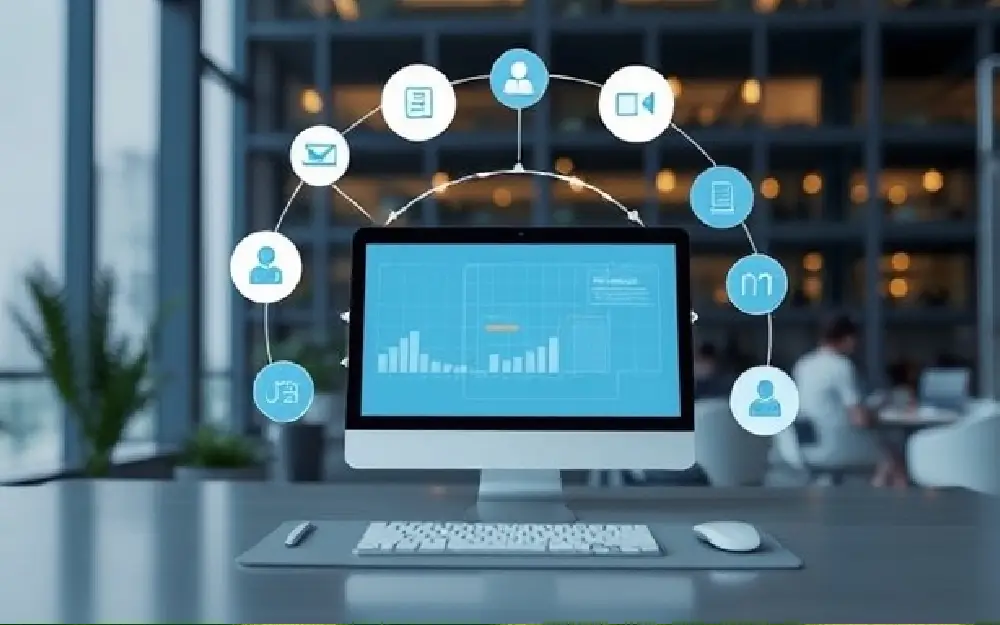
Building Management Software: Features and Benefits
Building Management Software (BMS) has become an essential tool for property managers, building owners, and facility operators to optimize building operations, improve efficiency, and reduce costs. Whether managing commercial, residential, or mixed-use buildings, a BMS helps streamline daily operations by integrating multiple functions into a single platform. This software aids in monitoring systems, scheduling maintenance, tracking energy usage, and ensuring regulatory compliance.
In this blog, we’ll dive into the features and benefits of Building Management Software to help you understand how it can enhance your building’s operations.
Key Features of Building Management Software
1. Centralized Control
A BMS centralizes control over various building systems such as heating, ventilation, air conditioning (HVAC), lighting, security, and more. This centralized approach provides operators with a comprehensive view of all critical systems in the building from one interface, making it easier to monitor and control everything in real-time.
2. Energy Management
Effective energy management is one of the top priorities for building operators. A BMS tracks energy consumption, identifies inefficiencies, and provides insights into areas for improvement. Features may include:
- Real-time energy monitoring
- Energy usage reports and analytics
- Automated control of HVAC and lighting systems to reduce energy waste
- Integration with renewable energy systems (solar, wind, etc.)
By optimizing energy usage, a BMS can lower utility costs and contribute to sustainability efforts.
3. Maintenance Management
Building management software can streamline the maintenance process by automating and tracking routine tasks. Features include:
- Preventive maintenance scheduling
- Work order management
- Asset tracking and lifecycle management
- Automatic alerts for maintenance due dates or system malfunctions
With this functionality, facility managers can ensure that equipment and systems are regularly serviced, reducing the likelihood of unexpected breakdowns and costly repairs.
4. Security and Access Control
Security is a top concern in any building. A BMS can integrate with building security systems to provide real-time monitoring of surveillance cameras, alarm systems, and access control. Key features may include:
- Visitor management
- Real-time surveillance footage
- Remote access control (lock/unlock doors from a central system)
- Integration with alarm systems for immediate alerts
This integration enhances the building’s safety and security, ensuring that access is tightly controlled and monitored.
5. Space and Occupancy Management
A BMS can help optimize the usage of space within a building, especially in office or commercial environments. Features include:
- Real-time occupancy tracking
- Space utilization analytics
- Room booking systems
- Integration with IoT (Internet of Things) sensors to monitor space usage
These features help building managers make informed decisions about space allocation, ensuring efficient use and reducing underutilized areas.
6. Regulatory Compliance and Reporting
Compliance with local regulations and building codes is a critical aspect of building management. A BMS helps automate compliance-related tasks by:
- Tracking environmental conditions (temperature, air quality, etc.)
- Managing fire safety and emergency systems
- Keeping records of inspections, maintenance, and repairs
- Generating reports for regulatory purposes
By automating compliance tasks, building operators can reduce the risk of non-compliance and associated fines or penalties.
Benefits of Building Management Software
1. Cost Savings
One of the most significant benefits of implementing a BMS is the potential for cost savings. By optimizing energy consumption, automating maintenance, and reducing downtime through preventive measures, a BMS can significantly lower operating costs. Additionally, identifying inefficiencies and opportunities for improvement helps cut unnecessary expenses.
2. Increased Efficiency
BMS enhances the operational efficiency of building management. Centralized control and real-time data allow facility managers to make quick, informed decisions. Automated systems for maintenance, energy management, and security reduce the need for manual interventions, allowing staff to focus on more critical tasks.
3. Improved Tenant Satisfaction
A well-managed building provides a better experience for tenants, whether they are residential or commercial occupants. Features like climate control, consistent lighting, and secure access ensure a comfortable and safe environment for residents and employees. Additionally, automated systems help reduce service interruptions and maintenance-related inconveniences, improving overall tenant satisfaction.
4. Data-Driven Decision Making
BMS provides valuable insights into building operations through data analytics and reporting features. Facility managers can access real-time data, historical trends, and performance metrics, enabling them to make data-driven decisions. These insights can help optimize operational strategies, predict future needs, and improve building performance.
5. Sustainability and Environmental Impact
A BMS helps buildings become more energy-efficient and environmentally friendly. By optimizing energy usage, implementing sustainable practices, and reducing waste, a BMS can contribute to a building’s green certification, such as LEED (Leadership in Energy and Environmental Design). This not only reduces the building’s carbon footprint but also attracts environmentally-conscious tenants.
6. Scalability and Flexibility
Modern BMS platforms are scalable, meaning they can grow with your building’s needs. Whether you manage a single building or a portfolio of properties, a BMS can adapt to accommodate different types and sizes of buildings. With cloud-based solutions, the software can be accessed from anywhere, offering flexibility for building managers on the go.
Conclusion
Building Management Software is a powerful tool for improving the efficiency, security, and sustainability of building operations. By automating critical tasks such as energy management, maintenance, and security, a BMS can provide significant cost savings while enhancing tenant satisfaction. With its data-driven capabilities and scalability, BMS offers building managers the tools they need to optimize building performance and future-proof operations.
Whether you are managing a commercial building, residential property, or mixed-use facility, investing in Building Management Software can help you stay ahead of the competition and ensure the long-term success of your property.
